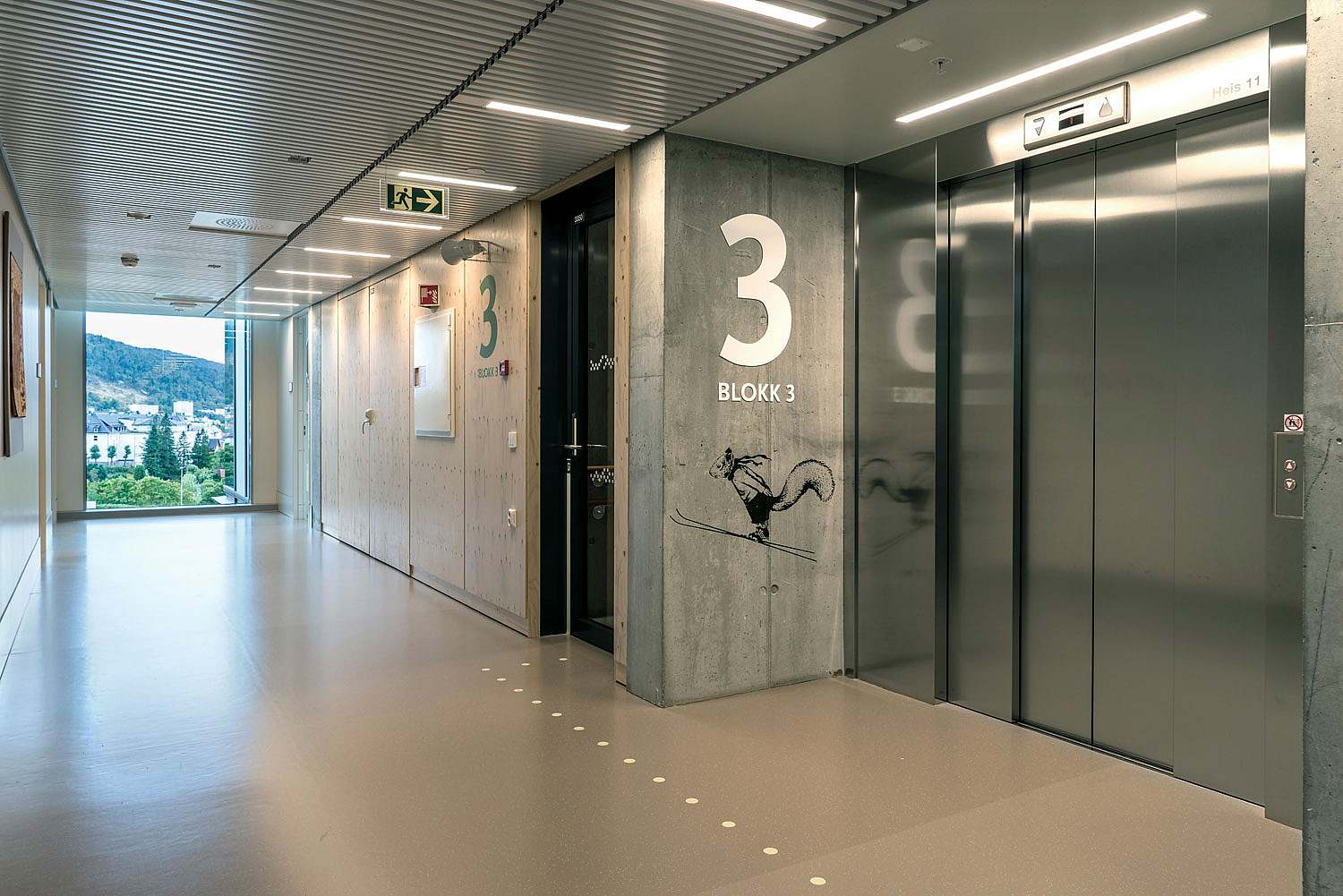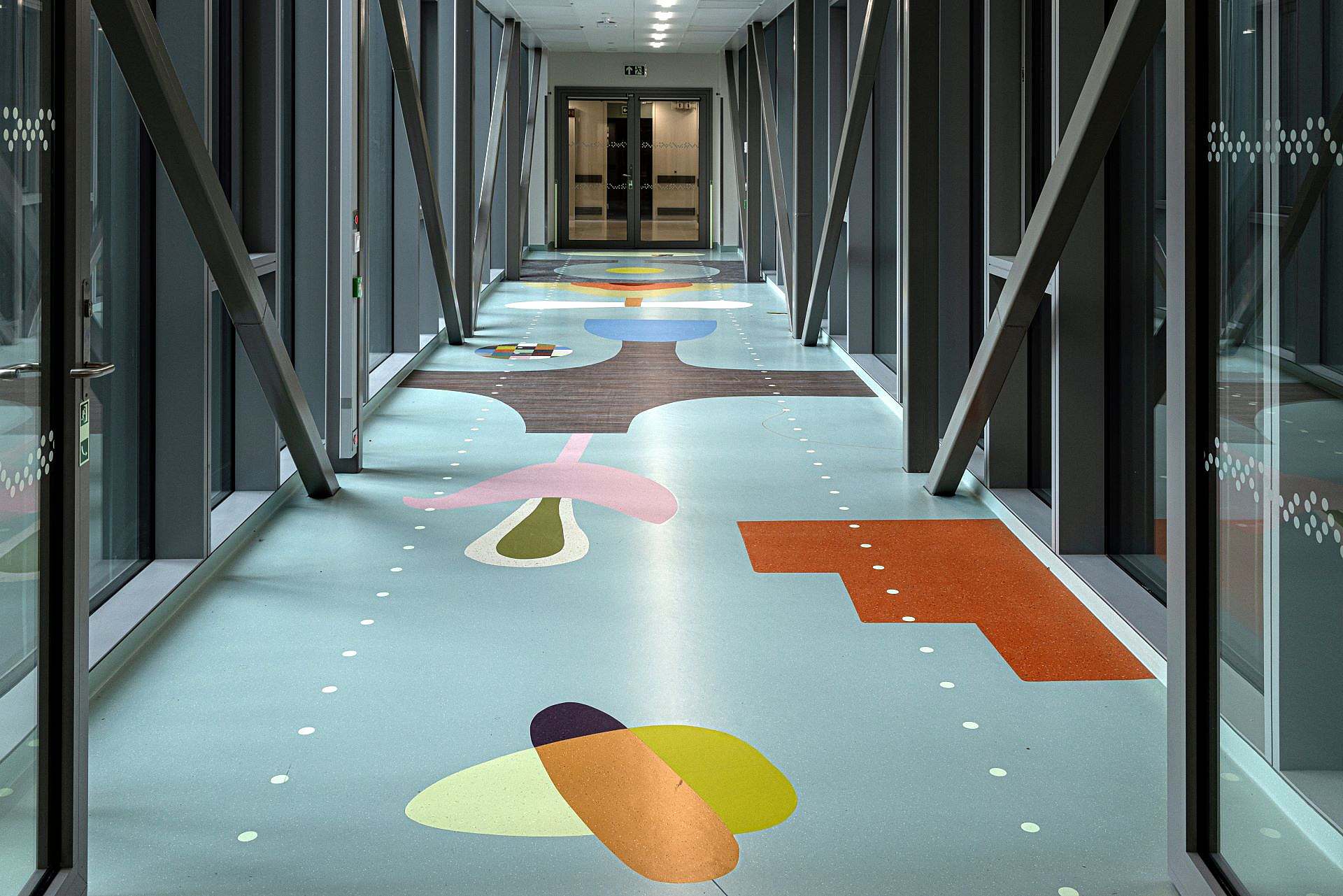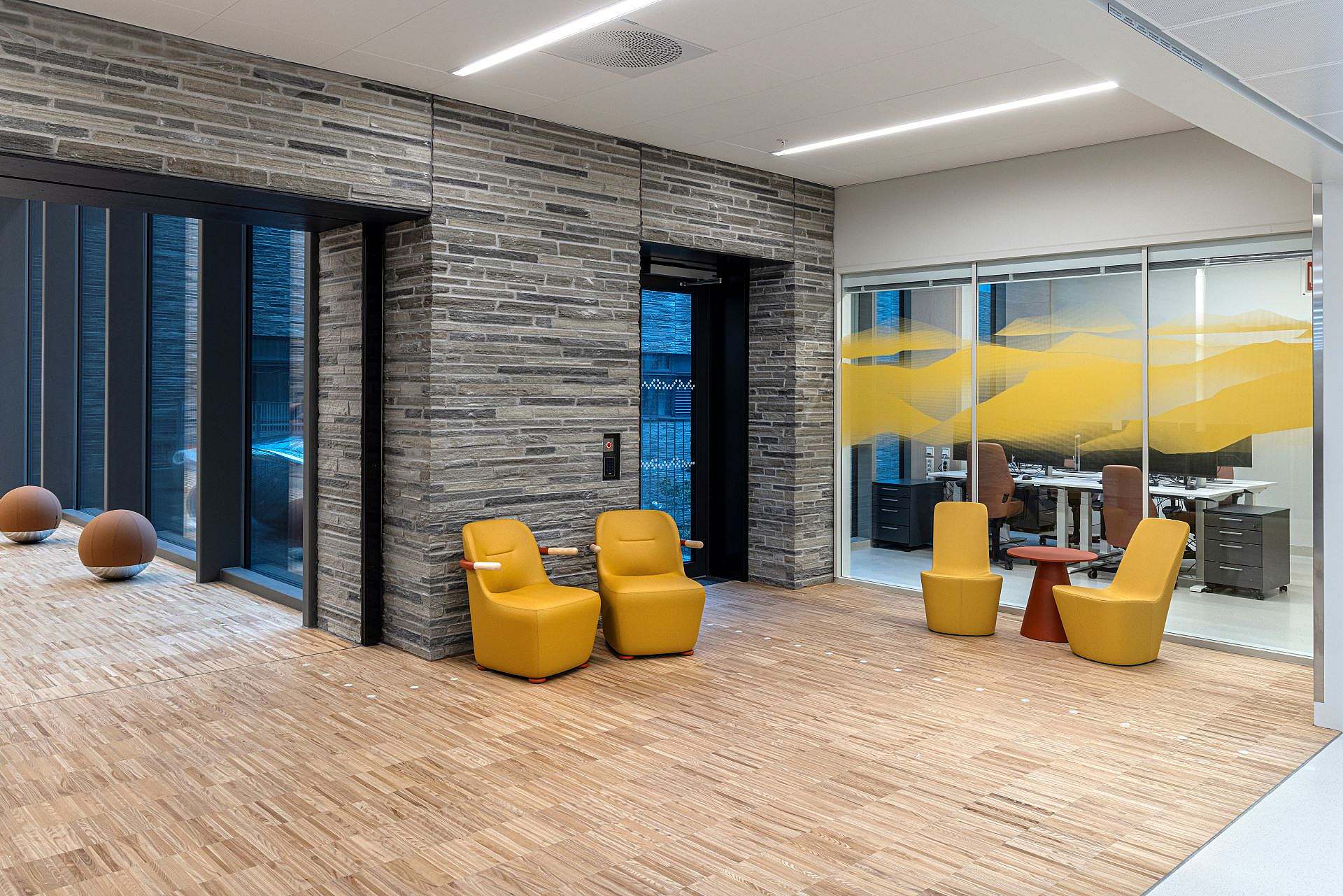The wayfinding concept at Haukeland Children's Hospital is an example of how good architecture can make complex buildings easy to understand and move around in. Already in the early design phases, the focus has been on supporting intuitive orientation and efficient flows for children, relatives and staff. The combination of thoughtful architecture, target group-specific signage, individual colour concepts for each block and integrated art elements create recognisability and a sense of place in the 79,000 m² hospital.
Bergen
Norway
Health Bergen
2024
79.000 ㎡

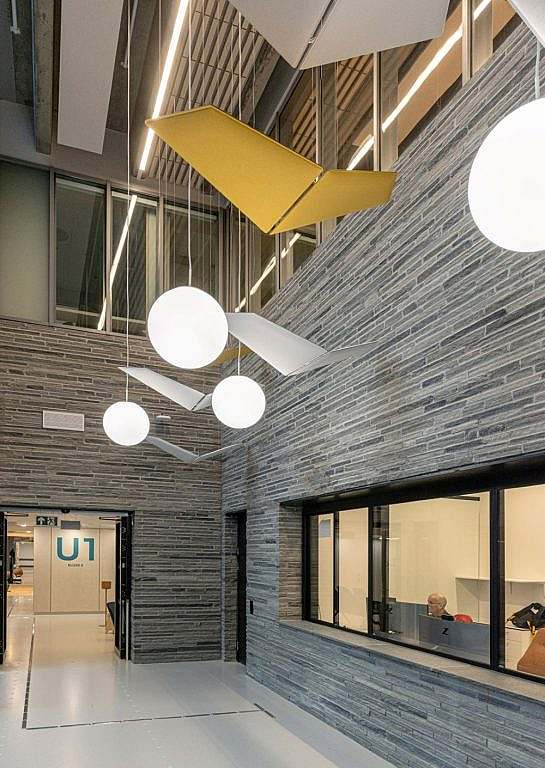
"Internal glazing draws natural daylight into the building and creates visual contact between zones, allowing children and adults to better orientate themselves."
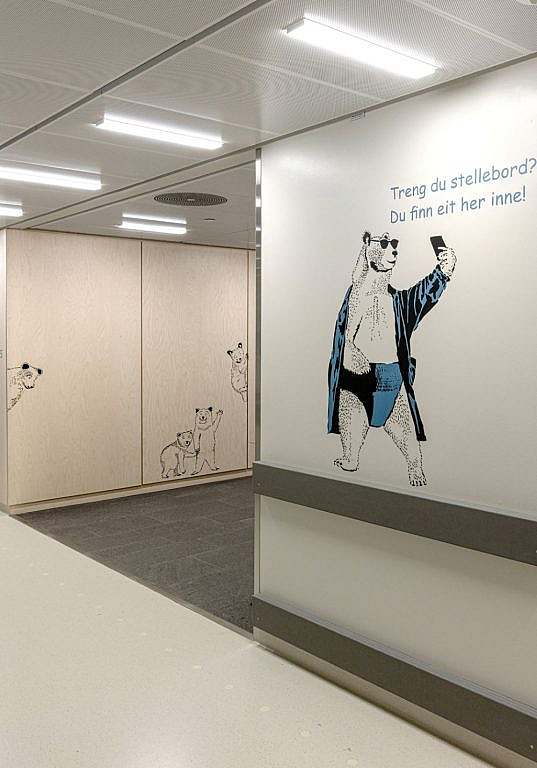
Print on glass serves multiple functions in one
Printed patterns and motifs on glass walls fulfil several functions in one: they reduce visibility and create screens in an open and transparent hospital environment. At the same time, they act as decorative elements that support the visual identity and wayfinding.
In this way, the glass surfaces become not just practical solutions, but active players in a holistic design that combines overview and entertainment with the need for privacy.
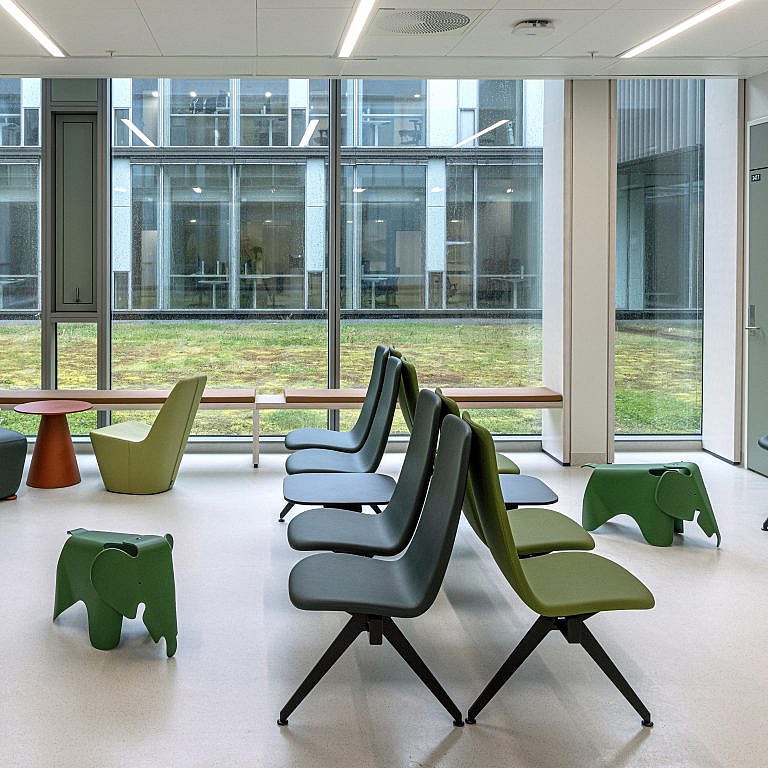
Art as a playful and therapeutic element
The artworks in the children's hospital are not just for decoration - they are carefully selected to support both orientation and well-being. Visual narratives and playful installations, such as the beads that have been rolled out throughout the area, encourage conversation and interaction between children and adults.
At the same time, the artworks create strong visual reference points that make it easier to remember where you are. In this way, art has a therapeutic and practical function in the architectural space, speaking to both the senses and the memory.
Architecture as the foundation for good wayfinding
Good wayfinding starts with good architecture. On the Haukeland Children's Hospital the building is designed from the start with a focus on logical connections, clear flows and visual landmarks that make it easy to find your way around. By incorporating orientation into the floor plan, building structure and daylight conditions from the very beginning, the overall system becomes more intuitive and user-friendly.
This ensures optimal work routes, minimises the need for extra signage and reduces the risk of patients and relatives getting lost. The result is a hospital where children and families find their way quickly and staff can work efficiently.
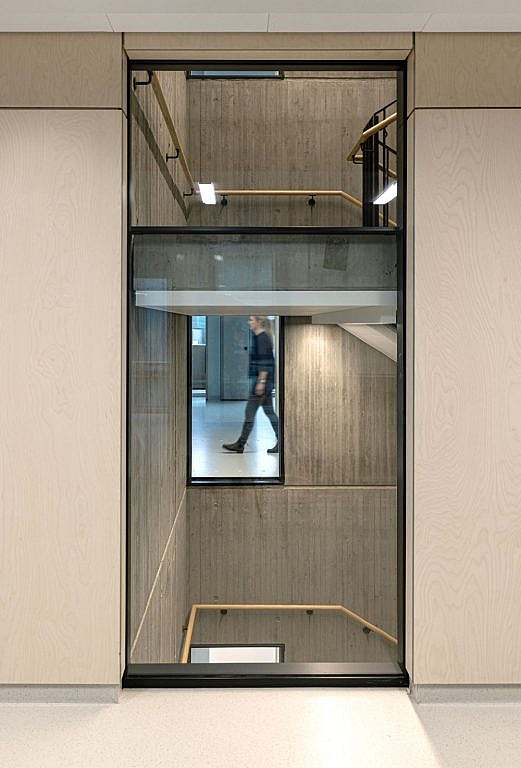
Animal motifs show the way at eye level
Animal illustrations are a central part of the wayfinding at Haukeland Children's Hospital. The animals appear as friendly characters that help children and their families recognise places and find their way through the hospital. The visual elements provide both an overview and reassurance and help to make the visit or hospitalisation a better experience where children can take the lead. The animals not only act as navigational aids, they also add play and storytelling to the environment.
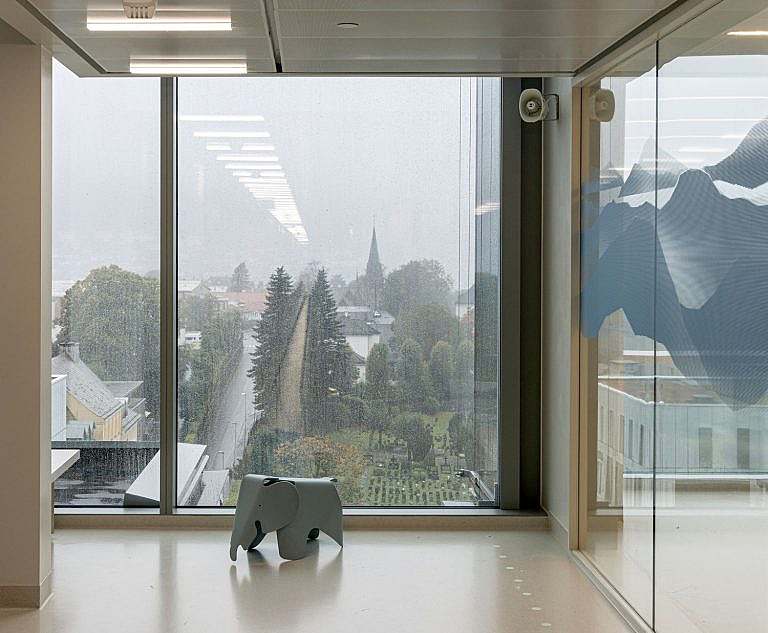
Colour themes create an overview
The glass blocks are structured as separate building volumes, and each block has its own colours that are repeated in the fixtures and fittings. The colour codes make it easier for children, parents and staff to orientate themselves in the building and find their way again. The combination of colours and architectural logic creates an intuitive system where users quickly learn to read and understand the hospital structure.

